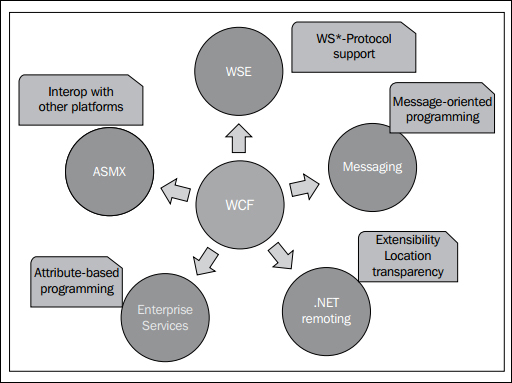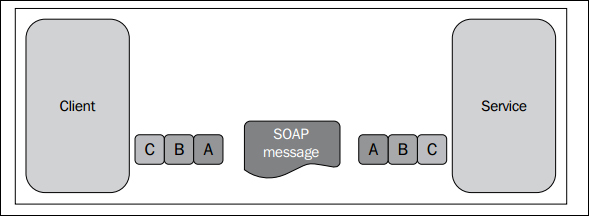There is always more than one solution to a problem. This is certainly true when designing solutions for your integration scenarios with Microsoft Dynamics AX 2012. As we learned in the previous chapter, there are a lot of options to choose from, both for deployment and development of services. In this chapter, we will focus on the options that are available when deploying services.
The following topics are covered in this chapter:
- WCF: Windows Communication Foundation provides the basis for building, configuring, and deploying services with Microsoft Dynamics AX 2012, so we will discuss the key concepts that are related to WCF.
- Service deployment: Deployment of services is enabled by integration ports. You will learn how to create, configure, and deploy these integration ports.
- Service generation: There is a lot going on when services are deployed. We will explore the artifacts that are generated and learn about Common Intermediate Language.
Windows Communication Foundation (WCF) was introduced with the release of .NET Framework 3.0. This release of the .NET framework was in essence Version 2.0 along with four additional components:
WCF is meant to provide a unified programming model to build, configure, and deploy services on distributed networks. It combines well-known technologies that have been around for some time, such as .NET remoting, Web Services Enhancements (WSE), MSMQ, ASMX, and message-oriented programming.

Note
The preceding diagram is provided courtesy of wcftutorial.net. If our introduction to WCF makes you curious about WCF and its technologies, this website does a great job of explaining it in detail.
An elaborate explanation of all of the features that WCF has to offer is not in the scope of this book because it would take us too long to cover them all. However, one of the important concepts to review is the ABC of WCF. Each service has endpoints through which communication is possible, and an endpoint has the following properties:
- Address: The endpoint address can be used to tell consumers where the service can be found. It consists of a Unified Resource Identifier (URI).
- Binding: The binding actually defines how communication is done. It defines the protocol, security, and encoding required for services and clients to be able to communicate with each other.
- Contract: Contracts are used to define what can be communicated. The following are the three types of contracts:
The following diagram sums it up. On one side, you have the client, and on the other, a service. This service has one or more endpoints that each consist of an address, a binding, and a contract. After adding a reference to the endpoint on the client side, the client becomes aware of the ABC, and messages can be exchanged.

